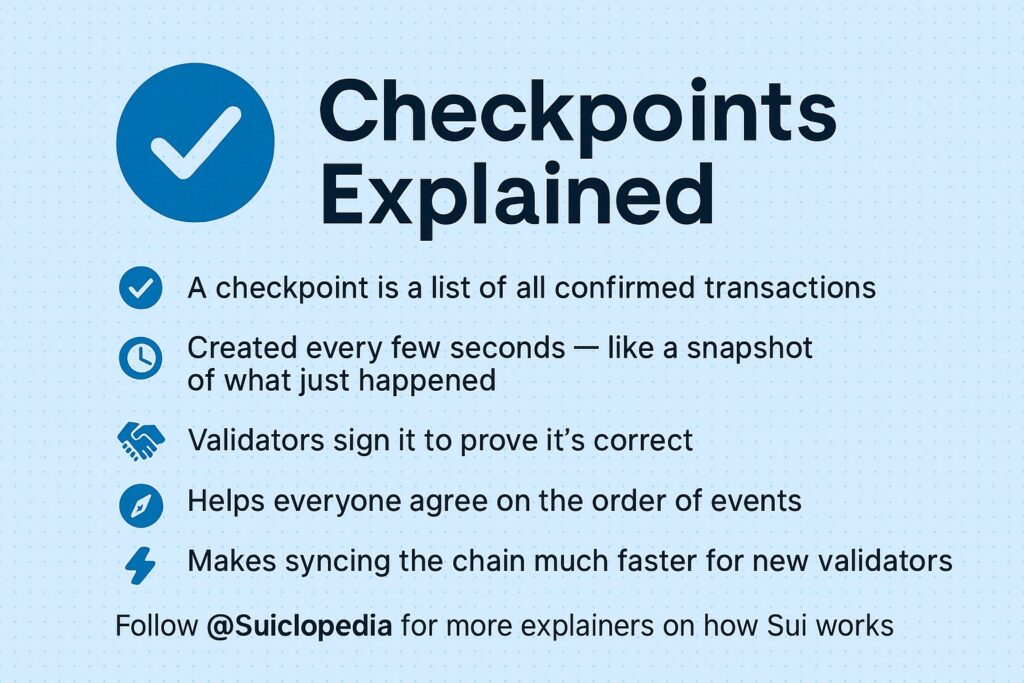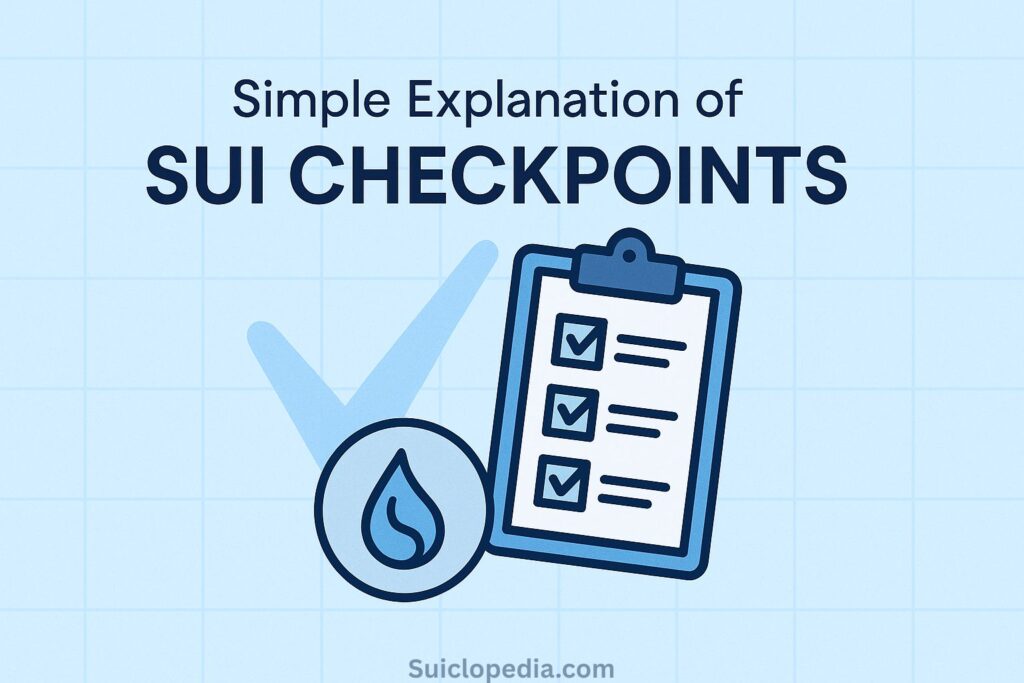In most blockchains, a transaction is considered final after it’s included in a block and that block gets confirmed by enough validators. But Sui does things a little differently. In Sui, finality is guaranteed through a process called checkpointing.
Let’s break down what that means in simple terms.
The Basics of Checkpoints
A checkpoint in Sui is a batch of transactions that the network agrees on and signs off as finalized. Once a transaction is included in a checkpoint, it’s considered irreversible and cannot be reverted, even in the event of network failures.
Think of it like a sealed envelope. When transactions are still in progress, they’re like drafts. But once a checkpoint is created, it’s like sealing those transactions in an envelope and sending them off, no changes allowed.
Sui creates checkpoints regularly (usually every few seconds), so the system reaches finality fast. This allows users and apps to trust that their transaction is complete.
Why Are Checkpoints Important?
- Finality – Checkpoints make sure that a transaction is permanently part of the blockchain and can’t be changed.
- Trust – Because validators sign off on a checkpoint, users can trust the result without waiting for extra confirmations.
- Syncing – New nodes can quickly catch up by downloading checkpoint summaries instead of replaying all past transactions one by one.
- Efficiency – It reduces the amount of work validators need to do, since they only need to agree on the checkpoint and not every single transaction individually.
How Does It Work?

Sui’s architecture allows many transactions to be processed in parallel. That’s great for speed, but it also means there needs to be a way to agree on the global state at certain points.
That’s where checkpoints come in.
- Validators run consensus to agree on a list of transactions.
- They bundle those transactions into a checkpoint.
- They sign the checkpoint and publish it.
- Once published, all participants know those transactions are final.
The result is a consistent, trusted view of the blockchain state that all parties can reference.
How Does Consensus Differ From Checkpoints?
- Consensus happens continuously as transactions are submitted.
- Checkpoints happen periodically to seal off the results.
In short, consensus is the ongoing work, while checkpoints are the periodic stamps of approval.
Here’s a real-world analogy:
Imagine a teacher grading homework. Students submit their assignments (transactions) at different times. The teacher reviews them as they come in (consensus). But at the end of the week, she records the scores in the gradebook (checkpoint). Once it’s in the book, it’s official and final.
Final Thoughts
Checkpoints are a unique and powerful part of how Sui delivers fast finality and reliable performance. By creating regular snapshots of finalized transactions, they make the system more trustworthy, efficient, and scalable.
So next time you hear someone mention a “checkpoint” in Sui, just remember: it’s like a seal of approval for everything that just happened on the water chain.


